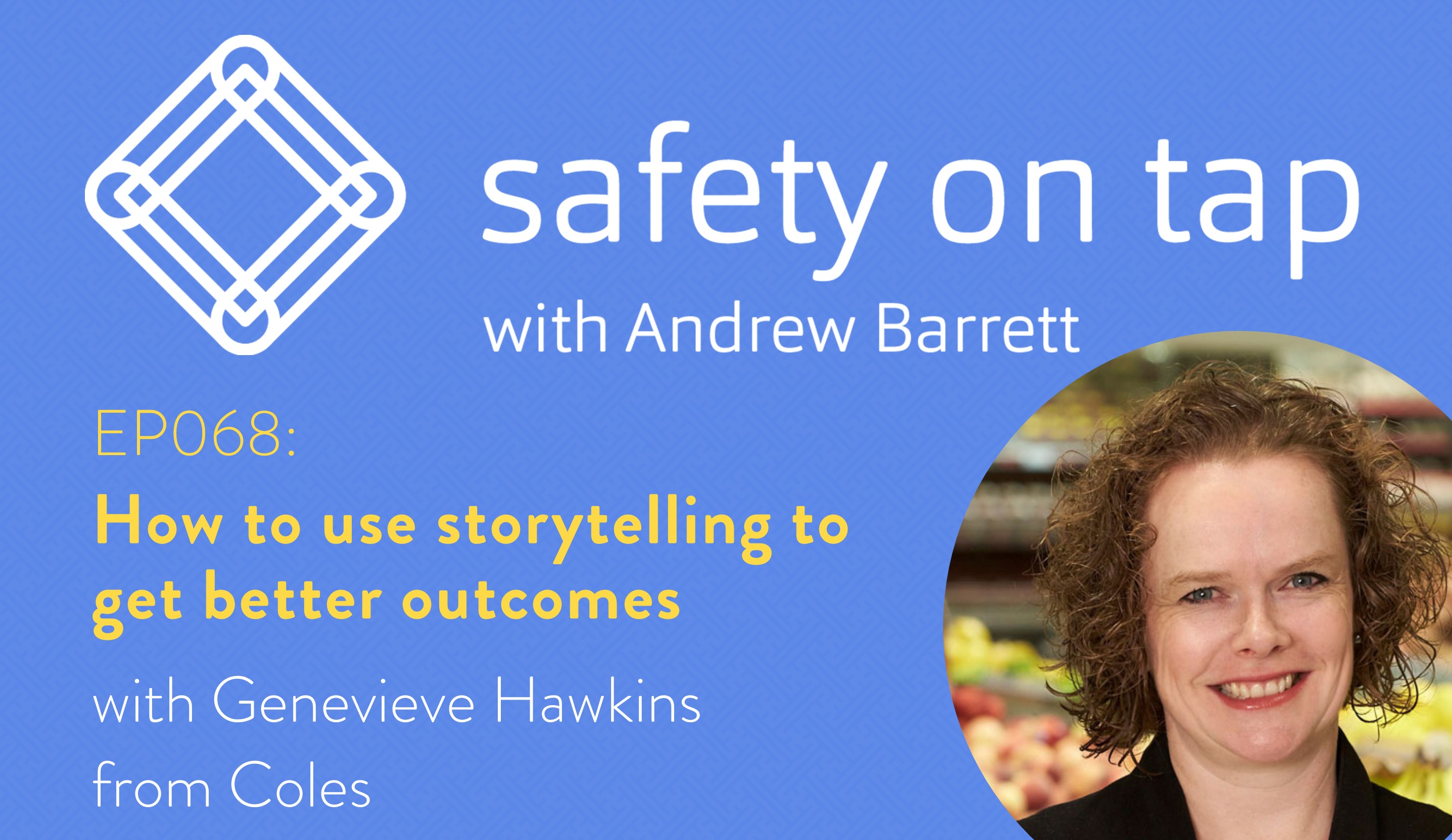Today I’m joined by Genevieve Hawkins from Coles. This episode is made possible by Safety on Tap Connected – what you might call a drastic innovation to your usual professional development.
I had a note from a member of Safety on Tap Connected the other day, after I helped him with a bit of a breakthrough. Part of SoTC membership is members get coaching from me, which gives members access to the kind of support usually reserved for only the most senior managers.
Anyway, he had been struggling with a few different things. Balancing the focus of these things was difficult for him. Two of these activities required him to present quite new and challenging ideas, to quite different audiences. It was quite a jumbled mess, but most troubling was that it was slowing him down, and clogging up his brain. Not a good situation for a go-getting kind of professional. So through our coaching we managed to disentangle these different priorities, get clear on the messages and audiences, and focus just on the next couple of steps to move those things forward.
This kind of thing is quite common, and really affects out effectiveness. Coaching is one way you get accelerate your growth. The best bit about SoTC is that if you have a supportive manager, you are supercharging your chances of success. If you don’t, then you aren’t limited by your circumstances, you have external support right at your fingertips.
If you want to know more about Safety on Tap Connected membership, check out safetyontap.com/connected
Genevieve Hawkins and I share some stories today, stories about how stories are such an important part in being more effective. Genevieve leads the Health, Safety and Wellbeing function at Coles, one of Australia’s largest supermarket chains.
Genevieve will be speaking at the 2018 OHS Leaders Summit which is being held on the 7th and 8th March in the Gold Coast. The OHS Leaders Summit is the only event in Australia specifically designed for the Group Heads of health, safety and wellbeing. It offers a unique combination of standout speakers, industry thought leaders, networking and personalised meetings with the leading suppliers of products and services, meaning you can leverage the best of what’s out there to help your health, safety and wellbeing programs succeed. Visit ohsleaders.com.au to find out more and get your seat – spots are limited.
Let the story begin. Here’s Genevieve:
I love a good story. I really appreciated that after we stopped recording, I had the opportunity to share and hear a few more stories with Genevieve, which honestly makes me feel like I know her more than just someone I spoke to for the first time today.
So before my takeaways, don’t forget, check out safetyontap.com/connected if you want to accelerate your effectiveness this year, and have a look at OHSleaders.com.au if you want to head along to this year’s event.
Here’s my three takeaways from that chat with Genevieve Hawkins:
Takeaway #1: Everyone can, and does tell stories. So it’s not hard for us to use stories more intentionally in our communication. I’m not suggesting it becomes forced or fake, quite the opposite – it’s about harnessing the wealth of experiences we have and to share these with good intent – to educate, to inspire, to move people to action. When Genevieve mentioned her focus on mental health, I saw the opportunity to reinforce that point, because I believe it to and want to help you to take action, so I shared a story I’ve never shared publically before. But your stories don’t have to be so deep and raw, maybe your intent is about relationship building through commonality with others, maybe it’s using humour to loosen up a group, maybe it’s educational about an incident so you can offset the bias people have about risk perception, which is limited by their own experience. You have the stories, and with the right intent, please use them.
Takeaway #2: Let stories dominate how you communicate. Genevieve mentioned that statistic about the proportion stories should have in even the most formal presentations. This is a hard suggestion to swallow, and I struggle with it. Our ego gets in the way, and our need to spew forth as much of what we know as we humanely can in the time available, and with as much facts and figures as possible. I do this, and I have to try very hard to pull back, to strip away the detail, and to focus on the one or couple of key points, and to enhance these with story.
Takeaway #3: Ask for stories! They are out there, so be curious. Literally, instead of saying “How did you get your nickname Babyface?” say “Tell me story behind your nickname, Babyface”. Asking for stories does a few things. First, it establishes you as interesting, because you are showing interest. Two, it gives you common ground with that person, the beginning or strengthening of the relationship. Three, it tells you so much about the person, how they told it, how vivid was it, what they emphasised, whether it was easy or hard to retell, the emotions in the retelling. Four, it builds your repository of stories to retell. I retell other people’s stories, with credit, all the time, when that helps the intent of my message. So please, ask for other people’s stories.
Until next time, what’s the one thing you’ll do to take positive, effective or rewarding action, to grow yourself, and drastically improve health and safety along the way. Seeya!
Here’s your FREE download of:
– my handwritten notes, PLUS a reflection template for you to use for this episode.
AND
– The full transcript of this episode.
I’ll also send you the links to all the available back-catalogue of reflection templates and transcripts so you can access these at any time.

